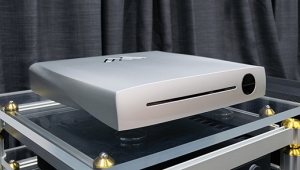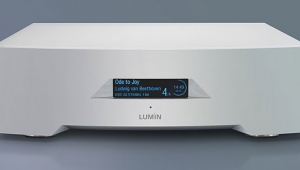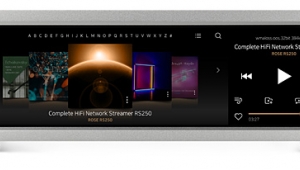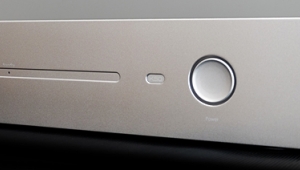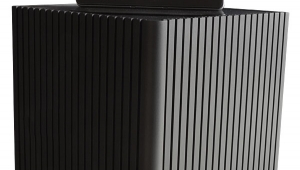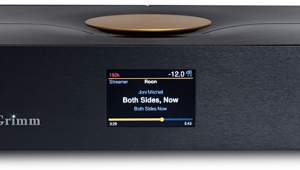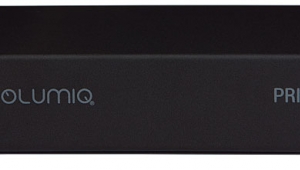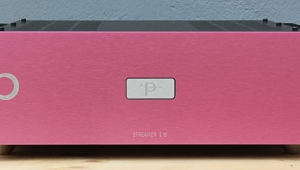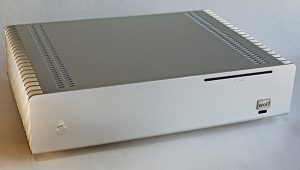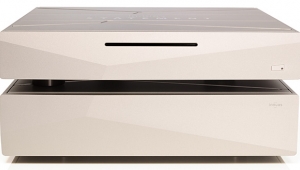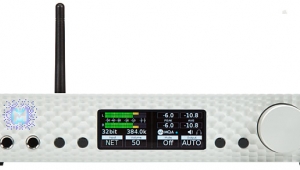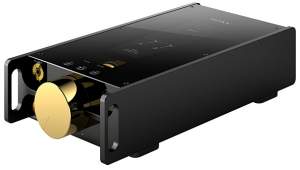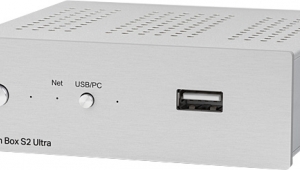| Columns Retired Columns & Blogs |
Yamaha GH1B digital home music system

Editor's Note: We were saddened earlier this month to learn of the death on December 7 of loudspeaker manufacturer Brian Cheney of VMPS, from prostate cancer. He contributed this review to Stereophile almost a quarter-century ago.—John Atkinson
The single-brand, self-contained music system has been popular at both ends of the price spectrum. A few hundred dollars at Macy's gets you a rack chock-full of offshore electronics, big speaker boxes, one plug (for the AC outlet), and—bingo!—instant music. Or, call your local Cello specialist and spend 60 times that amount, to roughly the same effect. Now Yamaha, a heavyweight in things from three-wheelers to VCRs, offers this imposing piece of satin-black furniture to the audio enthusiast willing to invest more than the usual amount of effort in order to hear his favorite tunes.
The GH1B is a full-digital system with both data entry and playback in real time. The 10-digit system is expandable, with difficulty (and a little expert help), to 20 digits; technologically informed readers will immediately recognize its limitations in adequately resolving complex musical events. Front-panel controls, while numerous, lack nomenclature, LED displays, or CRT readouts; in fact, apart from the manufacturer's logo, the only labeling on the business end of the system is a two-shade monochrome color coding (excuse the oxymoron). There is no provision for data compression or speeding up the infernally slow (EST) clock rate. Programmability is severely limited—more on this later. A programmable remote control, called the Vorsetzer, is available through Superscope dealers, but be warned, the AC-operated remote is nearly as complex and expensive as the main system itself.
This is not a unit for neophytes; I can only warn the unsuspecting of the considerable effort and expense necessary to boot up the equipment and get it to do what you want it to. Expert installation by the factory technicians who truck this Stanley Kubrick space-opera monolith into your listening room is followed by yet another factory-trained technician who laboriously tweaks the unit into a tonally coherent state, and whose services will be required more often than you re-tube your M300s! These visits aren't cheap, averaging around $75. Once the system is in place, you might want to invest in climate conditioning: the manufacturer's tutorial (very skimpy, I might add) warns against placement near a window, in direct sunlight, or in a room subject to humidity or temperature fluctuations. (What? Temperature and humidity do fluctuate at your house? For shame!) The system is equipped with a large dustcover which should remain open during play.
Internal wiring, in lockstep with latest audiophile thinking, consists of varying gauges of solid-core wire which is not, however, of OFC copper or precious metals. According to the manufacturer, this wire is an alloy of copper, tin, and nickel; one can only wonder how the sound would improve if the wiring were changed to van den Hul Silver or even MIT Music Hose. However, it is time to focus on the more problematic aspects of the unit, which are operation and sound quality.
This is very much a "sweet spot" system: the solitary listener is restricted to a small area near the data-entry keypad (itself nonstandard in that it is neither QWERTY nor Dvorak, or even alphanumeric). From this position, the perceived soundstage is both narrow and shallow, with no more than 4' or so of stereo spread and maybe an equal measure of front-to-back depth; many audiophiles will find such performance suggestive of mono, rather than high-end stereo. There was no real vertical depth, with all sound emanating from a plane about 30" off the floor.
Due to the unusual nature of the equipment, I invited a panel of experts, all well-known reviewers for "underground" audio publications, to conduct a single-blind (sorry, but I had to know what was happening) comparison of the GH1B against a $30,000 reference system installed in a live-end/dead-end environment adjoining the area where the Yamaha stood. A wide variety of program material was played and, to make a long story short, our experts preferred the reference system over the Yamaha just about every time. Prominent complaints about the sound of the GH1B included: "hard trebles," "trebles and mids hard and forward," "clangorous," "wiry," "percussive," and "doesn't sound like my IRS." I ascribe many of these comments to digital artifacts which I felt were readily audible at all times when the Yamaha was playing. The lone female panelist was quite dismissive of the Yamaha, saying: "It doesn't sound like live music to me!" The reference system was found to be mellower and more euphonic, while still musical. However, the GH1B did score well on some program material, such as Mozart, Scarlatti, and Jerry Lee Lewis.
An engineer by trade, I dislike purely subjective evaluations and therefore undertook a series of measurements, never forgetting the audio reviewer's ultimate byword: if it measures bad but sounds good, it's good, and vice versa. Frequency response was smooth but restricted, with 29Hz the low-frequency limit and 4192Hz the upper-frequency fundamental limit. While some response was evident on the RTA to beyond 20kHz, it was much reduced in level. It would be charitable to call this measurement indicative of high-fidelity performance.
On THD tests, large amounts of 2nd and 3rd harmonics were present at every test frequency, sometimes in double digits. This large harmonic content probably accounts for the colorations and characteristic timbrel qualities of the unit. IM distortion was also high, particularly at 1572Hz and above where the system becomes undamped and rings like a bell. This also, by hi-fi standards, is poor performance. At zero output, S/N ratio was excellent, with noise lost in room ambience, but there were some audible noise components during play, often sounding like thuds, clicks, or squeaks. The system could be cranked up loud enough to drive my wife out of the room; unless your spouse is fond of black (lots of it), the Wife Acceptance Factor of the Yamaha has got to be close to nil.
For proper operation, the user employs proprietary software which he decodes himself; system-language training is therefore mandatory. Far from the "user-friendly" operation of many PCs, this system can only be dubbed "user-exhaustive." Started young enough, small children might have the patience to learn the Yamaha programming language and find suitable software, but, gee whiz, the little tykes would have more fun with an Amiga, a color monitor, and some music floppies. Besides, the latter system will play itself, something which cannot be claimed for the GH1B. As the kiddies get older, I'd teach 'em to twiddle the knobs of Dad's Mark Levinson. Learning to decode this system's software and enter the data proficiently could literally consume years of your valuable time. There is no provision for error concealment or error correction; I would be more than usually worried about embarrassing dropouts, memory failures, and garbage playback with the Yamaha than with just about any other home music system I know.
All in all, a very mixed bag. I should point out that one critic/panelist, whose writing for a competing publication has a tediously musical orientation, felt that the Yamaha system was a good value for the price, and he was willing to live with its considerable limitations. A minority voice, indeed. For you, dear readers, I can only recommend this system to those few who absolutely, positively, must have a grand piano in the house.
Pardon me, I must practice now.
- Log in or register to post comments
